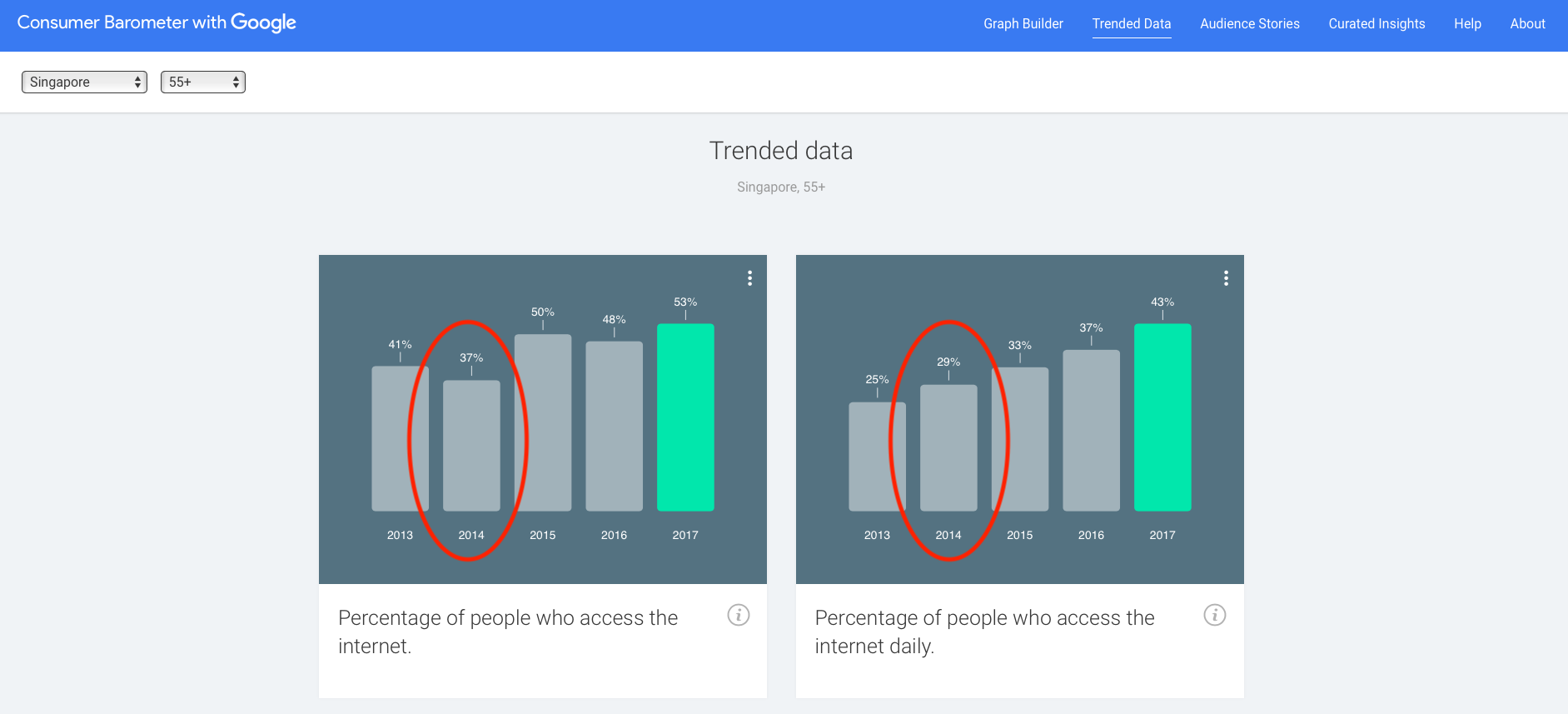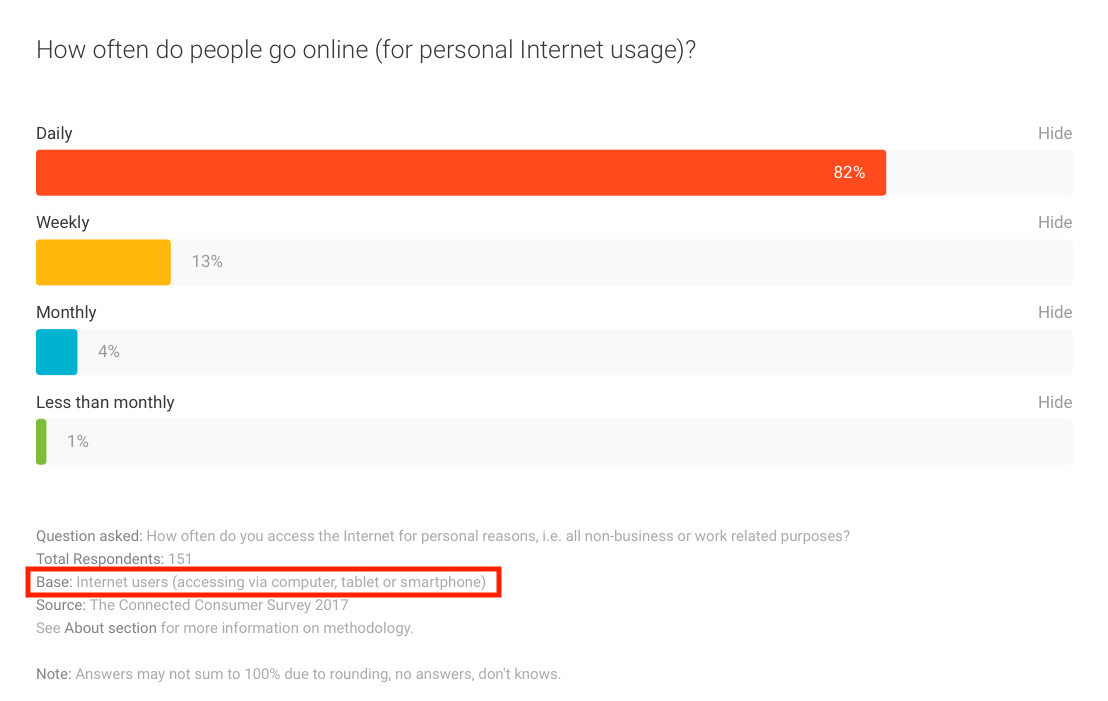4.2 Web-savvy Seniors?
Part of my research involves looking at how Internet use can improve the lives of older adults (see Ang and Chen 2018). I was interested in what the overall situation was like in Singapore, and googled something like “internet use seniors”. One 2014 article in the Straits Times immediately caught my eye (see Figure 4.2).

Figure 4.2: Screenshot of online article on web-savvy seniors. Retrieved May 21, 2019.
Within the article, the reporter states:
Also, 78 per cent of those aged 55 and older here access the Internet every day either via the traditional Web browser or smartphone apps, putting Singapore fifth in the world for having the most Internet-savvy seniors.
I was skeptical. Over and above my anecdotal experience with Singapore older adults, past research in the United States17 gave me reason to expect that the proportion of older people even using the Internet (everyday or not) should be much lower. Some results from Consumer Barometer are available online, so we can check for ourselves. Of interest in Figure 4.3 are numbers reflecting internet use in year 2014, which is when the news article was published. Note that the percent of Singaporeans aged 55 and above who use the internet daily in 2014 is 29%, not 78% as the article suggests.

Figure 4.3: Screenshot of Consumer Barometer findings across time. Retrieved May 21, 2019.
How then, did the reporter get things so wrong? While detailed statistics for 2014 doesn’t seem available online anymore, a little investigation using 2017 figures shows how the reporter arrived at a number as high as 78%.

Figure 4.4: Screenshot of Consumer Barometer results on 2017 internet use. Retrieved May 21, 2019.
Looking at Figure 4.4, the crucial part is the footnote that says “base”, which tells us that the 82% figure for daily Internet usage in 2017 are among those who use the internet. We can easily calculate this 82% with the numbers in Figure 4.3 - note that 4318 is approximately 82% of 5319. That is, . This recovers the 82% figure that we see in Figure 4.4.
Using the same strategy, we can recover the reporter’s figure for 2014: .
What does this mean? This means that just like the reporter in the Watain example (4.1), this reporter left out an important qualifier - only 29% of all older adults in Singapore use the internet daily, but 78% of those who use the internet use it daily. This vast discrepancy is highly consequential - the statement that “78 per cent of those aged 55 and older here access the Internet every day” is false, and the headline that “Majority of Singapore seniors are Web savvy” is misleading at best.
References
Ang, Shannon, and Tuo-Yu Chen. 2018. “Going Online to Stay Connected: Online Social Participation Buffers the Relationship Between Pain and Depression.” The Journals of Gerontology: Series B, September. https://doi.org/10.1093/geronb/gby109.